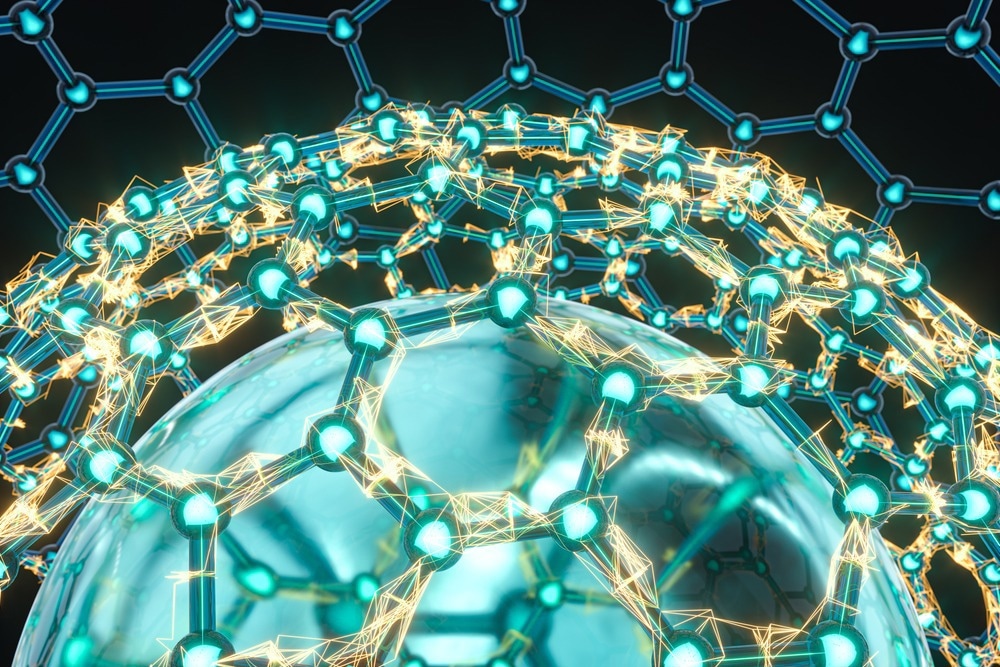Responsive materials react to external stimuli, including temperature, magnetic field, and light, and play a remarkable role in materials, biological, and sensing applications. An article published in the Journal of American Chemical Society presented a new endogenous stimulus, macromolecule crowding, for responsive nanomaterials.

Study: Macromolecular Crowding as an Intracellular Stimulus for Responsive Nanomaterials. Image Credit: Vink Fan/Shutterstock.com
Macromolecule crowding was realized by taking advantage of changes in the polymer’s thermoresponsive properties in the presence of a high concentration of crowding agents. Herein, poly(2-oxazoline) amphiphiles were prepared that exhibited lower critical solution temperatures (LCST) in the serum above physiological temperature.
The polymer amphiphiles stabilized the oil-in-water nanoemulsions at temperatures lower than LCST and resulted in emulsion fusion at temperatures above LCST. However, transformations at temperatures higher than LCST could also be induced at physiological temperatures by adding polymers and protein, making thermoresponsive materials crowding responsive.
Furthermore, injecting nanoemulsions into an embryo of zebrafish demonstrated that cytosol could serve as a stimulus resulting in droplet fusion. Thus, this experiment indicated that the macromolecule concentration could serve as a stimulus for thermoresponsive materials instead of temperature changes.
Responsive Materials and Macromolecular Crowding
Material chemistry and biomedicine integrated studies led to the development of many next-generation “smart” materials that are imparted with the functionality of high sensitivity to the external environment in the target cell/tissue.
Researchers have been investing considerable efforts in developing responsive nanomaterials that are sensitive to the stimulus to develop effective drug delivery or diagnostic vehicles based on responsive nanomaterials. Inside a biological system, responsive nanomaterials utilize an assortment of endogenous or exogenous stimuli to induce responses that can facilitate targeted drug delivery.
Macromolecular crowding is a phenomenon that involves transformations to offer free space for surrounding crowders. In laboratory practice, such macromolecular crowding is typically mimicked by concentrated solutions of various polymers that serve as model crowding agents.
Macromolecular crowding is an important effect in biochemistry and cell biology. The phenomenon of macromolecular crowding alters the properties of molecules in a solution when high concentrations of macromolecules such as proteins are present.
Polymers collapse on heating and possess LCST, below which the polymer gets hydrated, extended, and water-soluble. On the other hand, above LCST the polymer attains an insoluble, globular state. Thus, LCST transitions were exploited for generating nanoparticles, thermoresponsive micelles, hydrogels, films, polymersomes, and Pickering emulsions.
The responsive materials which are temperature sensitive employ the commonly known thermoresponsive polymer, poly(N-isopropyl acrylamide) (PNIPAM), with LCST at approximately 32 degrees Celsius. Moreover, the environmental factors, including concentration, pH, solvent, and ionic strength, often influences the LCSTs of the responsive materials.
Nanoemulsions Towards Macromolecular Crowding in Responsive Nanomaterials
The present work was based on a hypothesis that the high concentration of biomacromolecules upon cellular internalization could trigger a transition in properties of thermoresponsive polymer-based responsive materials.
Here, the nanoemulsions were employed to demonstrate the macromolecular crowding as a stimulus by using thermoresponsive surfactants as stabilizers. Initially, the nanoemulsions were designed and evaluated for their stability, which revealed their fusion on heating above LCST due to the decrease in hydrophilicity of the polymer, resulting in poor amphiphiles and loss of steric shielding.
Furthermore, conducting a series of heating experiments on polymers confirmed that the emulsion fusion observed was due to the macromolecular crowding-induced reduction in LCST than the enthalpic interactions between the crowder and nanoemulsion or viscosity effects. It was also showcased that the same transformations could be induced by proteins, synthetic crowders, and cells at temperatures below LCST.
Moreover, the studies conducted in the embryos of a zebrafish suggested that the crowded heterogenous environment of the cell can induce a significant LCST change in thermoresponsive materials causing intracellular protein crowding as a stimulus for responsive nanomaterials.
Conclusion
To summarize, the present work is the first report demonstrating the use of macromolecular
crowding as an endogenous stimulus for responsive nanomaterials. The LCSTs of the synthesized poly(2-oxazoline) amphiphiles were tunable and stabilized the oil-in-water nanoemulsions.
The sensitivity of the responsive nanomaterials to molecular crowding was evaluated using model proteins and synthetic crowders, which correlated with the overlap concentrations of the macromolecules. This correlation suggested the entropically driven excluded volume effects.
As scope for the future, studies to characterize the origin of the observed nanoemulsion fusion were recommended, which were anticipated to be affected by classical depletion effects or protein adsorption.
Through the present work, the application of molecular crowding on responsive nanomaterials was demonstrated by tailoring them to get destabilized in intracellular concentrations (“response window”) but be stable in extracellular concentrations of protein (“stable window”). Finally, in the presence of cell lysate, an irreversible fusion of oil-in-water emulsions was demonstrated within zebrafish.
Reference
Estabrook, D.A et al. (2022) Macromolecular Crowding as an Intracellular Stimulus for Responsive Nanomaterials. Journal of the American Chemical Society. https://pubs.acs.org/doi/10.1021/jacs.2c03064
Disclaimer: The views expressed here are those of the author expressed in their private capacity and do not necessarily represent the views of AZoM.com Limited T/A AZoNetwork the owner and operator of this website. This disclaimer forms part of the Terms and conditions of use of this website.